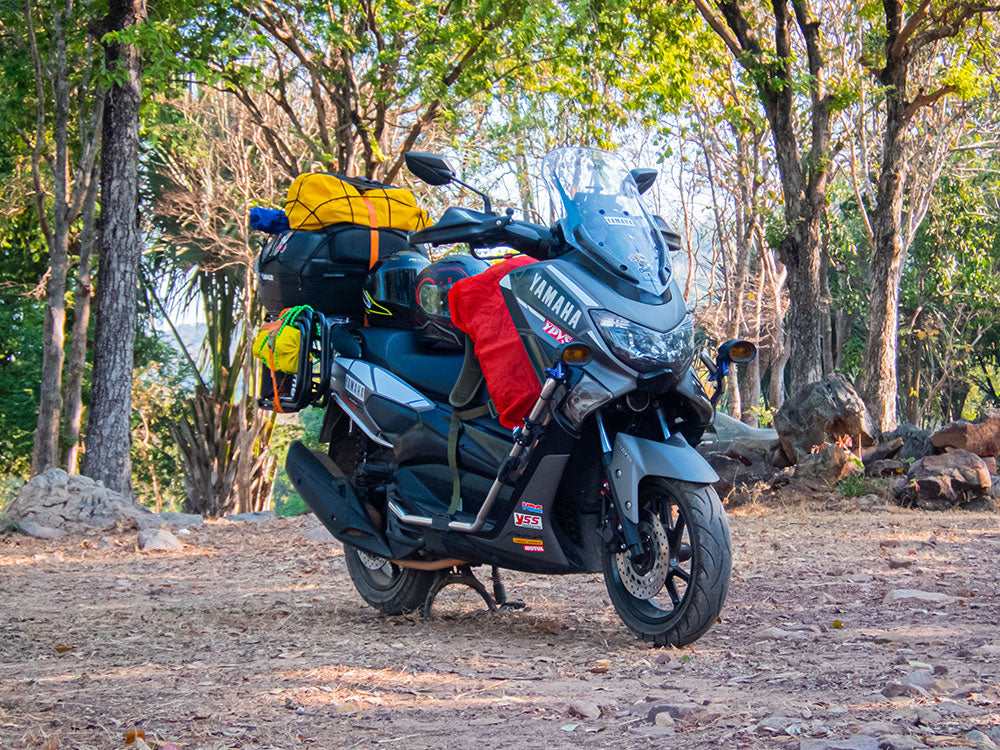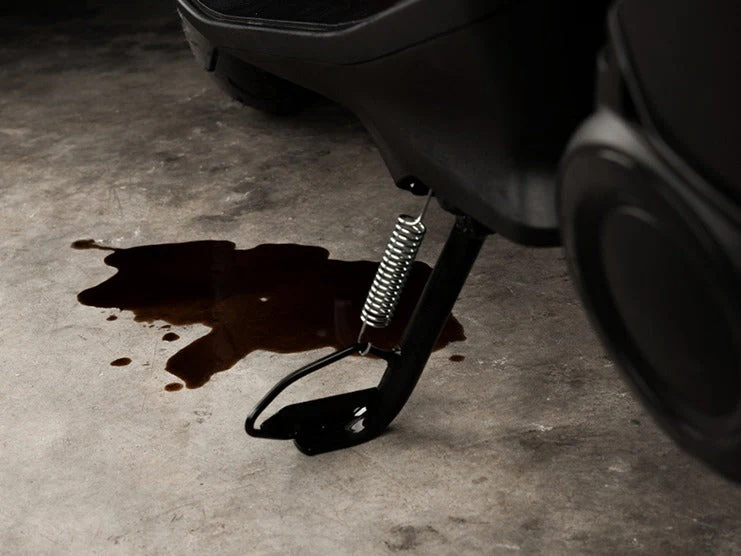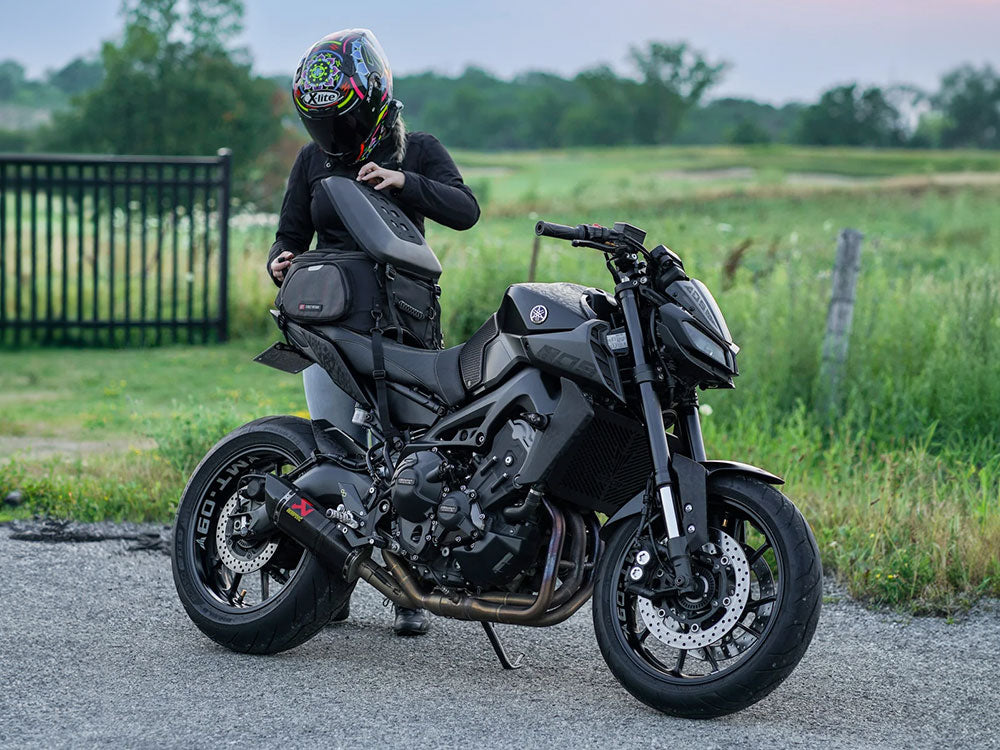Motorcycle camping can be a life-changing experience. Motorcycle camping gives riders the chance to improve their motorcycle riding skills, and road-survival skills, and learn how to pack light.
When considering what to take on your motorcycle trip, it is important to consider the following things:
Motorcycle You Ride
Experienced motorcycle campers claim it is possible to go camping on any motorcycle. This claim has merit when traveling to nearby campsites; however, you need a standard urban commuter or a heavyweight tourer to cover several hundred miles to reach a destination and tackle harsh off-road terrain.
For motorcycle camping, you need a lightweight motorcycle featuring a powerful engine, and a nimble chassis, that has ample carrying capacity, includes travel-friendly accessories, and can easily mount luggage.
Available Weight Capacity
Every motorcycle can only carry a certain amount of weight, including the rider, passenger, and luggage/camping gear. For a safe motorcycle camping trip, you must not exceed your vehicle’s maximum weight capacity. Extra weight may put more stress on your motorcycle, resulting in the engine overheating, flat tires, less stability, and delayed braking.
Location & Weather Conditions
Your campsite location and expected weather conditions will greatly influence your camping setup.
Available Resources
Depending on the campsite, certain resources will be available to you at the destination. To survive in resorts, organized campsites, or open lands you would need different equipment.
Riding Solo or with a Passenger
When riding solo, you can use the remaining carrying capacity and extra room to carry the luggage necessary for a comfortable camping trip. But when camping with a passenger, the available carrying capacity becomes significantly reduced.
This article provides comprehensive checklists of the things you should take on your motorcycle camping trips. Use these motorcycle camping checklists as examples. Add or remove items based on your preferences and needs.
Table of Content
1. Packing Clothes for Your Camping Trips
Even for summer camping trips, you need to take layers with you. Layers will help regulate your body temperature and can be moisture-wicking if you are wet due to sweat or rain.
You can take off or put on layers depending on how the temperature changes.
1.1 Choose the Right Materials
Focus on packing clothes made of innovative fabric technology that can withstand rugged conditions.
Wool
Wool works best as a winter base layer as it is odor-free, easy to wash, and dries quickly. Wool garments can also function as winter mid-layers due to their heat-retaining quality.
Silk
Lightweight, odor-free, easy-to-wash, breathable, and quick-drying, silk garments work best as base layers during the summer.
Polyester
Economical, durable, moisture-wicking, and quick-drying. Polyester garments are suited for windy and warm weather. Polyester’s low breathability makes it less suited for humid and hot temperatures.
Moisture-Wicking Base Layer
The base layer comes in direct contact with your skin. Moisture-wicking clothes should be the base layer as they best maintain your body temperature. Pack or wear garments made from moisture-wicking material as they will keep you cool and dry during the summer and warm and dry during the winter. e.g. - vest, tank top, and undergarments in summer and fleece thermals in winter.
Insulating Mid-Layer
The mid-layer helps retain your body temperature and keeps you warm. Pack garments that retain heat for optimal insulation. The mid-layer is required in cool temperatures and windy conditions. During the summer, the mid-layer can consist of casual clothing, like t-shirts, pants, shorts, long-sleeve shirts, etc. During the winter, the mid-layer can be sweatshirts, pull-over hoodies, heated vests, fleece-lined pants, or trousers.
Protective Outer Layer
The outer layer protects your body from the elements, including rain, snow, and wind. To prevent suffocation, overheating, and excessive sweating, choose clothing made from breathable materials for the outer layer. Lightweight, soft, and water-resistant rain jackets or windproof jackets are examples of summer outer layers. For winter, the outer layer should be windproof and waterproof clothing, such as fleece jackets, neck gaiters, and gloves.
2. Camping Equipment to Take on Organized & Dispersed Summer Motorcycle Camping Trips
Tourers, cruisers, and adventure touring motorcycles are the popular means of transportation to designated campgrounds. On average, they have a weight capacity between 180-230 kg, which is usually enough to carry all the camping equipment required to ensure a long and comfortable trip.
| Organized Campsite | Unorganized Remote Campground | |
|---|---|---|
| Ideal Motorcycles | Harley Davidson Road Glide | Harley Davidson Pan America 1250 |
| Available Load Capacity | 500 lbs/227 kg (including rider, passenger, and luggage) | 419 lbs/213 kg (including rider, passenger, and luggage) |
| Weather Condition | Warm Pleasant Weather | Warm Pleasant Weather; Light Rain; Windy |
| Duration | Usually Overnight or Weekend | Usually a Week-Long Trip |
| Terrain | Easy Off-Road Terrain | Harsh Off-Road Terrain |
| No. of Campers | Can Be Solo or with Passenger | Usually Solo |
| Travel Distance | 50-100 miles from the city and is close to small towns where groceries, water, food, and fuel are easily accessible | Usually 200-400 miles away from the city. |
| Amenities | Fire pit, BBQ grill, groceries, food, potable water, vault washroom, gasoline, and electricity available. | No Amenities Available |
| Packing Checklist | ||
|---|---|---|
Camping SetupThree-Season Motorcycle Tent with Integrated VestibuleThree-Season Sleeping Pad(s) Three-Season Sleeping Bag(s) Inflatable Pillow(s) Light Blanket (optional) Drywood for Campfire (optional) Hatchet to Cut Wood (optional) | ||
ClothingMoisture Wicking Vest, Tank Top, & Undergarments (Base Layer)Casual Clothing - T-Shirts, Pants, Shorts, Button-Downs (Mid-Layer) Lightweight & Breathable Wind & Water Resistant Jackets (Outer Layer) |
2.1 Summer MotoCamping Setup
Summer is the best time for motorcycle trips. Beginners have to take fewer belongings and the warm climate makes it easier to learn moto camping.
Tent
When traveling with a passenger, you should carry a large tent able to fit two people. The tent should have a built-in vestibule able to accommodate a motorcycle with full luggage bags.
When traveling to crowded organized campsites, an integrated vestibule protects your motorcycle from bad weather and theft. Try to take a three-season tent for summer camping trips as they provide protection from mild weather conditions, such as wind, rain, fog, and cold temperatures.
Best Tents
- Lone Riders MotoTent V2
- Redverz Atacama Expedition Motorcycle Tent
Summer Motocamping Sleeping Gear
After riding a significant distance to reach your motorcycle campsite, you need a good night’s sleep to be fully recharged for the next day. If you are camping during the summer with a passenger, you should take the following:
- Inflatable Pillows x 2
- Three-Season Sleeping Bags x 2
- Three-Season Sleeping Pads x 2
Best Sleeping Pads
- Therm-a-Rest Neo Air Uber-Lite Sleeping Pad
- Therm-a-Lite NeoAir X-Lite Sleeping Pad
- NEMO Fillo Pillow
- REI Magma Sleeping Bag
Clothes
When traveling in warm weather, you should take t-shirts, jeans, trousers, or shorts. You should take more clothes if you are planning a week-long camping trip than an overnight camping trip.
For an overnight trip, you can carry one extra t-shirt and a pair of shorts. For a week-long trip, you can carry three to four shirts and two pairs of jeans.
In open remote areas, the temperature drops considerably after midnight. You should carry a light jacket and socks to stay warm. For more details, see the clothing section above.
Food & Water
If there are food establishments and water sources available at the campsite, or grocery stores in any nearby towns, you will have following options:
- Buy cooked food rather than carry a cooking kit, a stove system, utensils, groceries, and snacks.
- If you buy groceries from nearby grocery stores, carry a cooking kit, fuel, and a stove system.
- It is optional to carry groceries and dry meals since you can easily find food items at or near the campsite.
- Clean water sources are often available at most campsites. For remote campgrounds, take a water filtration system or water bottles.
Firewood
You can bring your own supply of firewood or you can scavenge for timber around the campsite during the summer. Some campgrounds allow you to use fallen branches or logs as fuel for your campfire. It is best to carry a small hatchet to cut any dry wood on site. If you are not allowed to use dry wood from the campground, you can carry dry wood or not use the campfire.
Because of the “leave no trace” policy, there are strict BLM fire restrictions in unorganized campgrounds and national parks. In unrestricted areas, you need to get a campfire permit from the Bureau of Land Management.
3. Camping Equipment to Take on Organized & Dispersed Winter Motorcycle Camping Trips
Because you need thicker clothing, heavier riding gear, and winter camping essentials, traveling light for a winter motorcycle trip requires careful preparation. Inexperienced riders should keep to organized campsites for a safe winter camping experience.
| Organized Campsite | Unorganized Remote Campground | |
|---|---|---|
| Ideal Motorcycles | BMW R1250GS | Triumph Tiger 800 |
| Available Load Capacity | 476 lbs/216 kg | 478 lbs/217 kg |
| Weather Condition | Cold, Wet, Snowy Conditions | Cold Weather; Snowy Conditions |
| Duration | Variable | Variable |
| Terrain | Slippery Wet Road Conditions; Difficult Off-Road Terrain | Demanding On-Road/Off-Road Conditions |
| No. of Campers | Usually Solo | Usually Solo |
| Travel Distance | 300+ miles from the city; whether organized or free lands | 240+ miles |
| Amenities | Areas with and without amenities | Areas with and without amenities |
| Packing Checklist | ||
|---|---|---|
Camping SetupFour-Season Motorcycle Tent with Integrated VestibuleOr Hammock Four-Season Sleeping Pad(s) Four-Season Sleeping Bag(s) Or Hammock Sleeping Pad Hammock Top Quilt Hammock Underquilt Inflatable Pillow(s) Warm Blanket for Max. Insulation |
ClothesBase Layer: Thermals, Socks, Heated VestsMid Layer: Lightweight Sweater, Waterproof Liner, Sweatshirt, Fleece Trouser/Pants Outer Layer: Fleece Jacket, Down Jacket, Fleece Gloves, Hands & Feet Warmers, Waterproof Snow Boots, Fleece Neck Gaiters, Waterproof Rain Jacket, Waterproof Trousers |
|
3.1 Winter Motocamping Setup
Winter motorcycle camping is an enjoyable experience but can be difficult to carry adequate luggage with the limited weight capacity.
Tents
Your winter motorcycle tent should be weather-resistant and offer optimal protection in low temperatures. For a winter motorcycle camping trip, you should carry an ultra light-weight four-season tent suited for the following uses:
- Treeline Use - High altitude, cold weather, gusty winds, no snow on the ground, 33-43°F temperature
- Snow Use - Thick snow on the ground, snowfall, heavy rain, below 32°F
Best Winter Motocamping Tent
- Terra Nova Voyager Four-Season Motorcycle Tent
Best Winter Motocamping Hammocks
Hammocks can help keep you off the cold ground, but don’t provide much insulation on their own. You can fix this issue by adding a four-season inflatable sleeping pad and an insulated underquilt. However, a hammock sleeping pad, top quilt, and underquilt add 1,869 grams to your motorcycle’s weight.
Best Winter Hammocks
- ENO Skyloft
- Lawson Blue Ridge
Best Sleeping Pad, Topquilt, Underquilt for Hammock
- PowerLix Hammock Sleeping Pad
- ENO Spark Hammock Top Quilt
- ENO Ember Hammock Underquilt
Winter Sleeping Gear
- Klymit Insulated Static V Sleeping Pad
- Atarashi Camping Four-Season Sleeping Bag
Firewood
You must bring your own supply of firewood when camping in the snow since all the wood around the campground would be wet. Make sure to check if there are any BLM fire restrictions for the area.
To start a campfire quickly when it is snowy, carry a few small logs to the campsite. Kiln-dried wood is easily available at Amazon. These eight-inch mini logs come with fire starters, burn longer, and are the only reliable source of warmth in frigid weather conditions.
Cooking Setup
You can use a campfire or carry a compact stove system to cook food. If you wish to cook using a campfire, you need compact pots and pans. You can also use a stainless steel Stanley cup to boil water.
Clothes
For winter motorcycle camping trips, you should take insulating layers, such as a lightweight fleece jacket or liners, thermals, thick socks, and boots. Carrying warm and lightweight clothes is better than carrying one bulky jacket. For more details, s ee the clothing section above.
4. Motorcycle Camping Essentials Common to All Situations
You may need to carry other equipment regardless of weather conditions and location. Usually, these items don’t take up much space. You can put them in small pouches attached to your motorcycle’s handlebars, crash bars, and windshield.
| Common Motorcycle Camping Essentials | ||
|---|---|---|
Miscellaneous
|
Groceries & Food
|
Motorcycle Tools
|
Toiletries
|
Cooking Supplies
|
Camping Equipment
|
5. Takeaway
Take your time when considering what to take on your motorcycle camping trip. Motorcycle camping is as diverse as the riders, locations, weather conditions, and motorcycles.
To come up with a complete list, try gathering and arranging different camping equipment to see which ones perform the best under certain conditions.
Related: The Best Motorcycle Camping Setup













Leave a comment
All comments are moderated before being published.
This site is protected by hCaptcha and the hCaptcha Privacy Policy and Terms of Service apply.